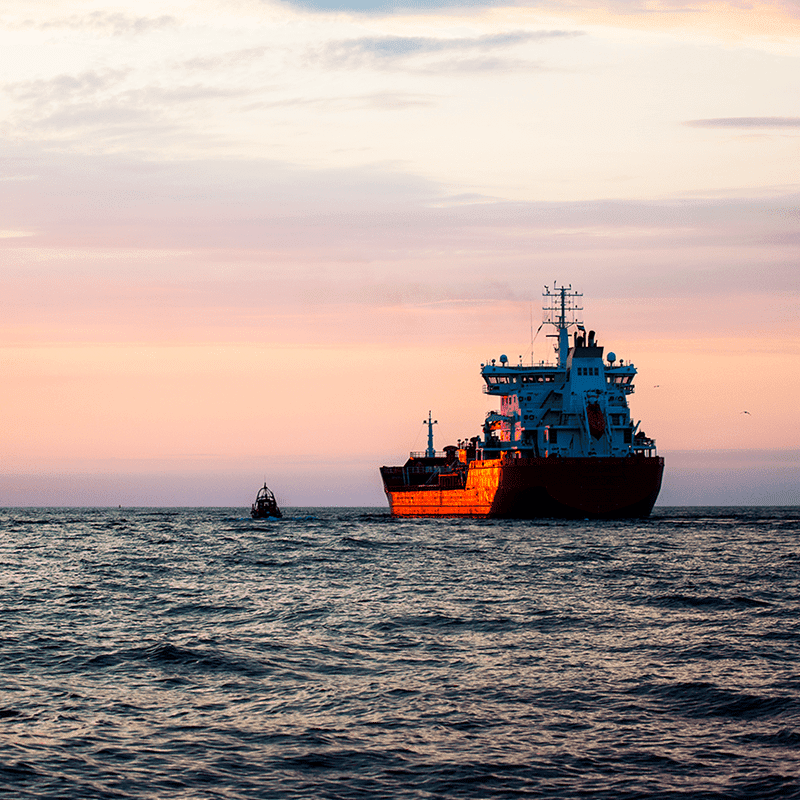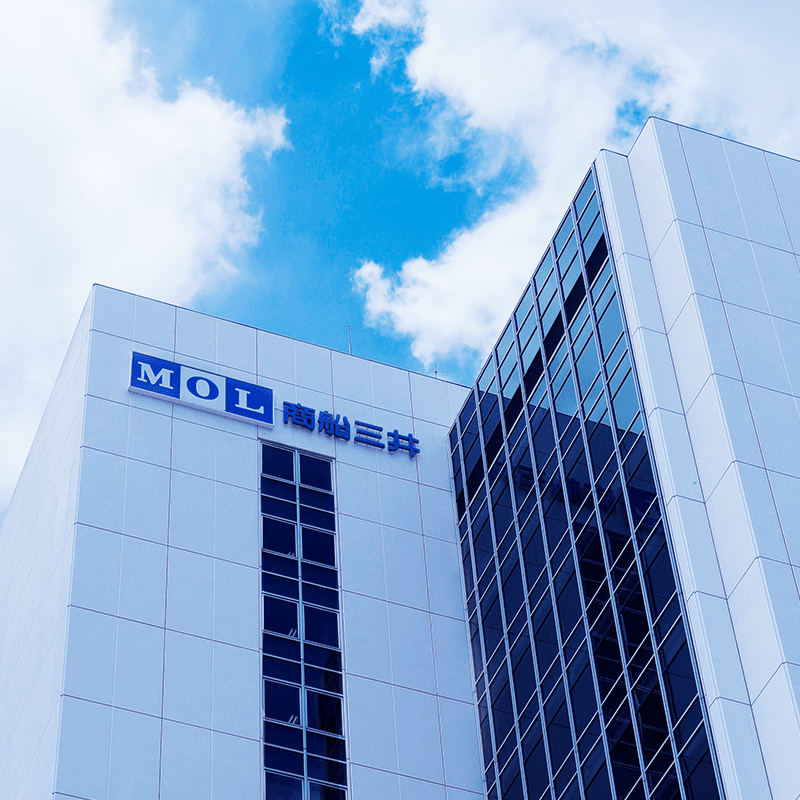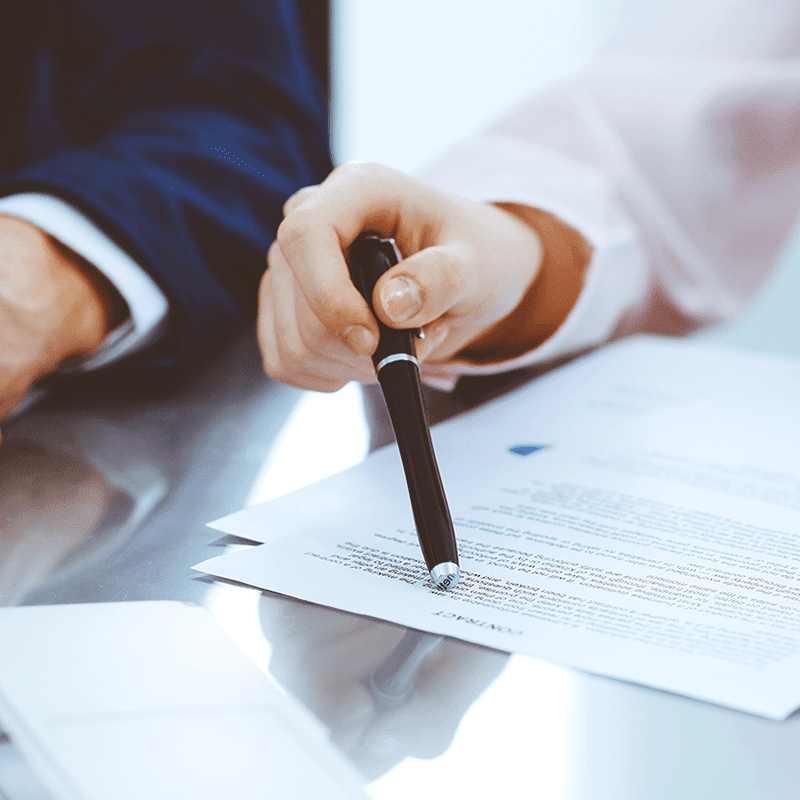BLOG
Why you board airplane from left-side?
- General Shipping
2022.03.22
Do you remember when you board a plane at an airport? Whether you board through the boarding bridge or by ladder, you will invariably board through the left door of the plane. A door is also installed on the right side of the plane, as is indicated before takeoff by cabin crews demonstrating emergency procedures, but the left side door is always used by passengers for getting on and off the plane.
So, why do we always use the door on the left when boarding a plane? Surprisingly, the reason lies in the history of ships, not airplanes.
Port Side and Starboard Side
In the world of ships, the left side of a vessel is called the “Port” side and the right side is called the “Starboard” side. The term “Port” side literally means the port side, while the term “Starboard” side is a corruption of “Steering board” side, meaning rudder side.
Modern ships have their rudder at the end of the hull, whereas medieval ships (Viking Ships) had their rudder at the right rear of the hull. It is not known why the rudder was installed on the right side, but one theory is that it was because many people were right-handed. The rudder was placed on the right side of the hull, so that right-handed people could operate the rudder using their dominant hand.
If the rudder is placed on the right side of the hull, the left side of the hull will be used to land the ship to avoid damaging the rudder when loading and unloading people or cargo at a port. This is why in the world of ships the left side is called the port side and the right side the starboard side.

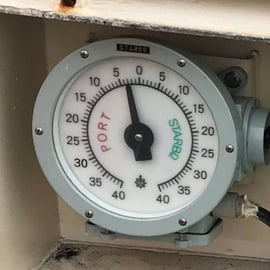
Left: Oseberg ship (A.D. 800) on display at the Viking Ship Museum in Oslo.
A rudder is installed at the right rear of the hull.
Source: Wikipedia
Right: The rudder angle indicator on modern ships.
“Port” on the left and “Starboard” on the right.
Source: MOL
The plane's left side is also the Port Side.
In this way, in the world of ships, the left side of the hull has become the port side, and has been used for getting people on and off since early times. Consequently, in the 20th century with the advent of air travel, people began to board and disembark through the left side of planes just as on ships. Over time, many airport facilities, including the boarding bridge, began to be designed on the basis of left side boarding/disembarking, and the left side of planes became port side as well. With few exceptions, almost all airports now use the left door for passengers to get on and off.
In general, in the operation of planes, passengers get on and off using the door on the left side, and maintenance work such as delivery of food and beverages and carrying out of garbage is done using the door on the right. Therefore, in the aviation industry, the left door is called the “Passenger Entry Door” and the right door is called the “Service Door”.
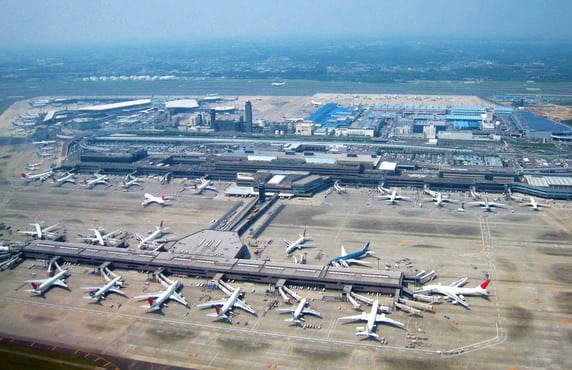 Photo: Narita Airport. All the boarding bridges are connected
Photo: Narita Airport. All the boarding bridges are connected
to the left side door of the airplane.
Source: Wikipedia
Red on the left and Green on the right for Navigation Lights on both ships and planes
In addition to where passengers get on and off a plane, many other rules and regulations for ships have been adopted by planes. For example, on planes, a red lamp is used on the left wing tip and a green lamp on the right wing tip, again following the regulations for ships which require the installation of a red navigation light on the left side of the ship and a green navigation light on the right side.
The red light on the left and the green one on the right are required equipment to indicate the direction of the ship. If you see a red light in front of your ship, it means that the other ship is sailing to the left, and conversely, if you see a green light from your ship, it means that the other ship is sailing to the right. If there is a danger of collision between the two ships, the ship that sees the red light must take avoiding action.
If you see a green light on the left and a red light on the right, it shows the other ship is heading toward your ship. If there is a danger of collision between the two ships, each ship needs to avoid the other by turning to the right.
These maritime traffic regulations have been transferred to planes, requiring them to install the red light on the left wing tip and the green light on the right wing tip, and it is stated that the plane seeing a red light must take avoiding action when there is a danger of collision, as with ships.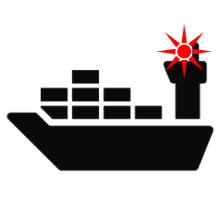
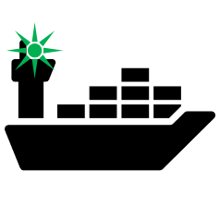
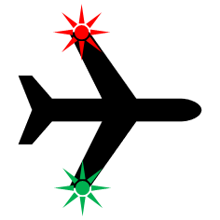
Other things that ships and planes have in common.
Furthermore, many words and customs used on planes are derived from ships. These include calling the pilot in command a "Captain," who wears a four-lined rank insignia (epaulets and/or sleeve badges); the passenger compartment is called the "cabin”; and flight attendants are called the "crew". All of these are ship conventions brought to the plane.
Other terms brought over from the maritime industry include "airport", is in an air "port"; in the aviation industry it is customary to call a plane a “ship" rather than an "aircraft" or "airplane"; the aircraft number is referred to as the "ship number"; and the change of equipment for use is called a "ship change" rather than "aircraft change".
Ship navigation terms have also been introduced to plane navigation, with distances measured in nautical miles rather than kilometers, and speeds measured in “knot” based on nautical miles. Before inertial navigation systems or radio navigation systems using satellites and radio beacons had been developed, the navigation technology used by ships in the open seas, where no land was in sight, was also used by planes flying between continents.
Rank insignia for Maritime Professions
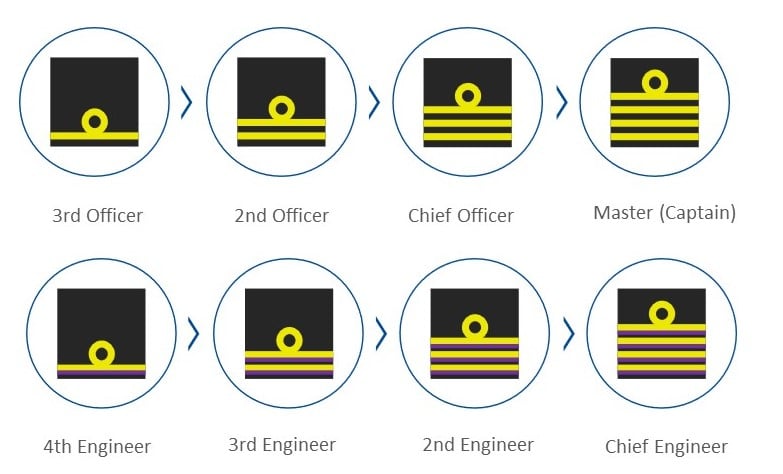
* In the case of planes, the captain wears a four lined rank insignia and
the first officer (Co-Pilot) wears a three lined rank insignia.
In this article, we introduced some of the similarities in terminology and customs between ships and planes, such as the reason for boarding the plane through the left door. As an aside, modern ships have their rudder in the center at the tail end of the hull, so there is really no longer any reason to berth on the port side. In fact, depending on the port and wharf condition, it is not at all uncommon for ships to berth on the starboard side. Nowadays, it seems that planes are operated more faithfully to the port side rule than ships.
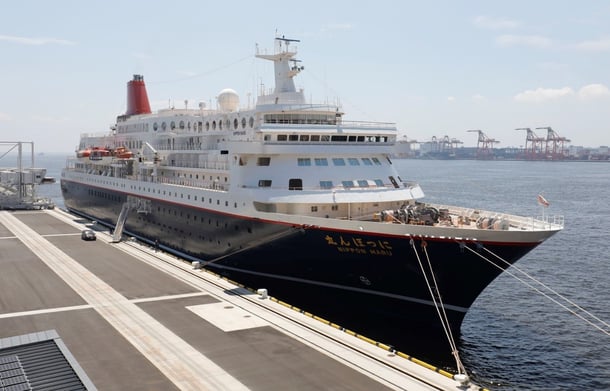

Above: Cruise Ship “Nippon Maru”
It was the first ship to enter Tokyo International Cruise Terminal, which opened in September 2020.
https://www.mol.co.jp/en/pr/2020/20072.html Source: Mitsui O.S.K. Passenger Lines, Ltd.
Below: “MOL FSRU Challenger”
MOL owns and operates the world's largest Floating Storage and Regasification Unit (FSRU).
FSRU (Floating Storage and Regasification Unit) |MOL Services|Mitsui O.S.K. Lines Service Site (mol-service.com)
Both ships are berthing on the starboard side.
In a world that demands uncompromising safety, whether on a ship or on a plane, education and training are essential to enhance crew knowledge and skills. Mitsui O.S.K. Lines, is committed to contributing to the prevention of accidents at sea and to the development of marine transport by offering a full range of training programs to train seafarers who are responsible for safe marine transportation, an essential element of our daily lives.

Writer:Takahiro
Joined the company in 1991. A man in his 50s has experienced in dry bulk shipping, crude oil and petroleum product tanker shipping, and fuel oil procurement for our operated ships before he transferred to market research. Recently he gains excess belly fat probably because he had been involved in oil-related businesses for a long time...
Recommended Articles
2022.07.05
- General Shipping
2021.04.13
- Energy
2023.12.19
- General Shipping
2021.08.07
- Eco Friendly
2025.03.18
- General Shipping
Latest Articles
2025.12.09
- Eco Friendly
- General Shipping
2025.12.03
- General Shipping
2025.11.20
- Energy
- General Shipping


